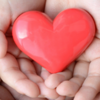Trauma, the Brain and Recovery

One of our amazing Spurgeons Counsellors, Natalie, has written this article to help us understand trauma and give an insight into how it affects children…
Trauma is a ‘wound’. It causes bio-chemical inflammation and reduces blood flow to the brain. Neurons need oxygen and glucose and they obtain these via blood circulation. Anything that interferes with this process will cause further damage and prevent healing.
Trauma can be epigenetic and some individuals can have a pre-disposition towards being traumatised easily. There are many different causes of trauma ranging from the extremes such as war, natural disasters/accidents and rape to developmental trauma from childhood such as abandonment, abuse, neglect – sexual, physical and emotional. Even birth stress to mother and child and some invasive medical and dental procedures can bring on trauma.
Brain areas affected by trauma:
- Pre-frontal cortex – the ‘CEO’ of the brain. Controls executive functioning. This region of the brain is not fully developed until 24 years old.
- Amygdala – the ‘chief security officer’ of the brain. Sends out ‘alerts’ at signs of perceived trouble – fear, anger, surprise, disgust. It activates fight/flight/freeze responses.
- Hypocampus – the ‘data centre’. Where memories are stored. HOWEVER, traumatic memories are not stored here but are instead ‘split-off’ and stored within the body. This region of the brain is not fully developed in children until 4 years old.
- Anterior cingulate gyrus – the ‘gear changer’, controls cognitive flexibility, self-sensing and awareness. The bridge between the thinking and feeling sides of the brain. This part is affected by diet and movement, in particular sugar.
- Broca’s area – turns thoughts and feelings about experiences into words. Children can struggle here, so trust and safety can help heal this damaged area. Children act out trauma through their behaviour as they can neither describe it nor remember it well.
There are two types of trauma symptoms/behaviours –
Hyperarousal – where the person displays outward signs of trauma such as flashbacks, panic attacks, mood swings, nightmares, hypervigilant/active, shame and self-loathing, anxiety and phobias.
Individuals can be attracted towards danger as a way of increasing depleted levels of dopamine and serotonin (feel-good hormone/neurotransmitters). These in turn can cause addictions, avoidance and mental blockages.
*Similar to ADHD symptoms
Hypoarousal – where the trauma is more internalised. Dissociation Symptoms when people become detached from oneself, their own life, thoughts and feelings. OCD/compelling behaviours. Mood swings and amnesia. Immobilization/Freezing. Overwhelming feelings of helplessness. Primarily PTSD.
At Spurgeons we tend to see more of some of the above symptoms in children than others. Counselling enables expression and awareness and, we can offer thought restructuring techniques. We use a lot of art and play therapy to encourage expressing thoughts/feelings. At Spurgeons, we never give up. Our sessions aren’t time limited, we can continue for as long as the healing takes.
Sign up to our regular Parenting in a Pandemic newsletters


